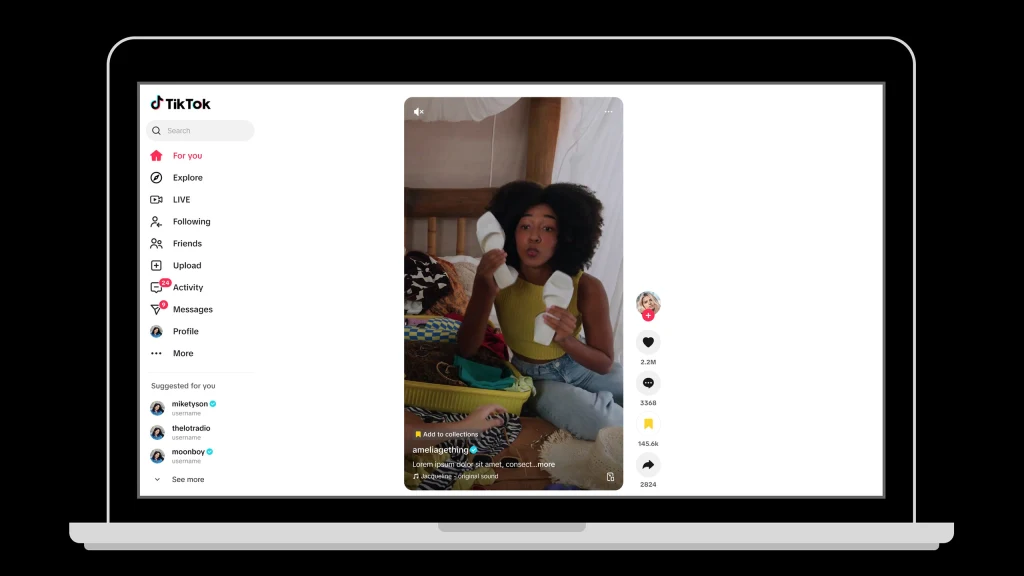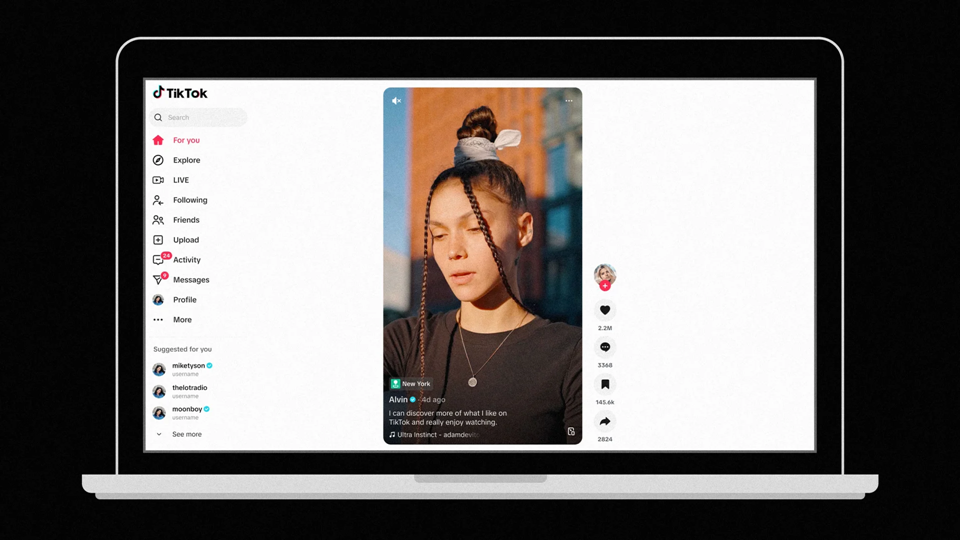Uh oh. TikTok just made its desktop experience way better
February 28, 2025
Uh oh. TikTok just made its desktop experience way better
TikTok’s desktop browser is now easier to use, more fun, and nicer to look at. I’d like the old one back, please.
TikTok just updated its desktop viewing experience to offer a smoother UX, expanded features, and more ways to watch. I wish it would go back to how it was before.
It’s no secret that TikTok has a mobile-first design. Its beloved hyper-specific algorithm and For You page, as well as its wholehearted embrace of short-form video, has inspired copycats the likes of which include everyone from Instagram to LinkedIn and Substack. TikTok has even changed the fabric of culture itself, shortening attention spans and shaping the music industry as we know it. While TikTok shines on mobile, its desktop experience has historically been significantly less intuitive.
The new desktop browser is, by all counts, a marked improvement. But, for those of us who turn to the clunky desktop TikTok to cut down on screen time, it’s not necessarily a good thing.

Ugh, TikTok’s new desktop browser is better
The biggest change to TikTok’s desktop browser is the noticeably smoother UX. Previously, scrolling through videos on the homepage could feel delayed and glitchy, which quickly becomes frustrating given that it’s the platform’s main function. Now, each clip transitions smoothly into the next—an element of TikTok’s new “optimized modular layout” that offers “a more immersive viewing experience and seamless feed exploration,” according to a press release. The look of the platform has also been cleaned up and simplified, including via a minimized navigation bar, to “reduce distractions” during doomscrolling.
Beyond the improved UX, updated desktop TikTok also comes with a few new features. It’s poached the Explore tab straight from the app, giving users another, less tailored feed to explore. There’s now also full-screen live streaming modes for gamers, a web-exclusive floating player on Google Chrome so users can watch brainrot Subway Surfers TikToks while they shop online, and a collections tool that can organize saved videos into subcategories.
And, yeah, on the surface, all of these changes are reasonable responses to TikTok’s lackluster web browser experience. They make it more frictionless, intuitive, and enjoyable. But did the developers ever consider that maybe some of us liked it when it was bad?
Can we just not?
When TikTok entered the mainstream around the early pandemic, I downloaded it on my phone for a total of about two days. The reason it didn’t make the cut in my app library was not because it was bad, but because it was actually too fun—so much so that reading my AP Lit homework started to feel like an insurmountable task when those little videos were, like, right there.
For me, the ideal screen time solution has been to delete social media apps from my phone and only check them when I’m on my computer, where their desktop counterparts tend to be more outdated and, sometimes, downright annoying. My one exception to this rule is YouTube Shorts, but only because its algorithm is leagues behind TikTok’s and therefore tends to drive me away by recommending one too many English hobby horsing videos. Am I still addicted to these apps? Most definitely. But do I feel like I have to check them every 30 seconds? Thankfully, no.
TikTok’s desktop experience used to similarly serve as a refuge from the mobile app itself. It was a safe place to get a quick taste of what’s happening online without getting sucked into a three-hour rabbit hole about giving butter to babies. Its irritating quirks were precisely the point—and, I would argue, plenty of other desktop users likely turned to this version for the same reason.
Now, though, as the desktop experience creeps ever-closer to the actual mobile app, we’re all going to have to figure out where to relegate TikTok so that we can hack our brains out of craving it.
ABOUT THE AUTHOR
Fast Company
(2)



